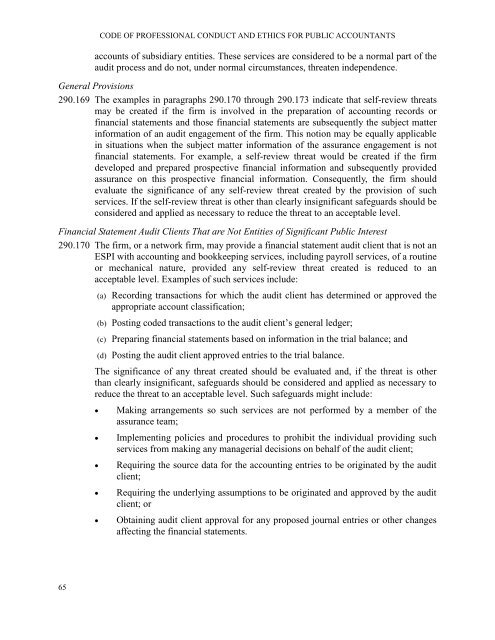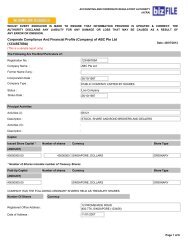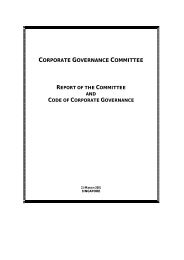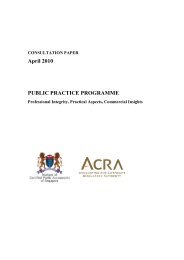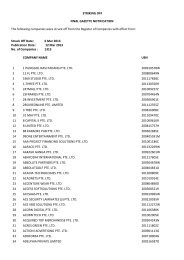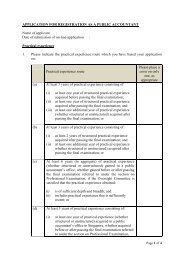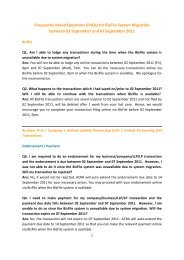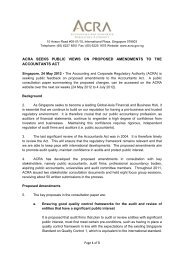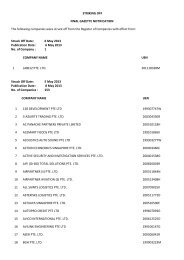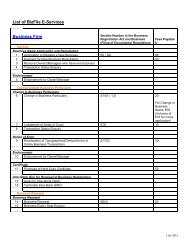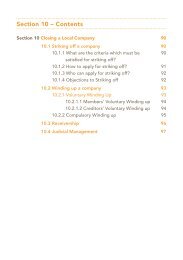Exposure Draft - ACRA
Exposure Draft - ACRA
Exposure Draft - ACRA
You also want an ePaper? Increase the reach of your titles
YUMPU automatically turns print PDFs into web optimized ePapers that Google loves.
CODE OF PROFESSIONAL CONDUCT AND ETHICS FOR PUBLIC ACCOUNTANTS<br />
accounts of subsidiary entities. These services are considered to be a normal part of the<br />
audit process and do not, under normal circumstances, threaten independence.<br />
General Provisions<br />
290.169 The examples in paragraphs 290.170 through 290.173 indicate that self-review threats<br />
may be created if the firm is involved in the preparation of accounting records or<br />
financial statements and those financial statements are subsequently the subject matter<br />
information of an audit engagement of the firm. This notion may be equally applicable<br />
in situations when the subject matter information of the assurance engagement is not<br />
financial statements. For example, a self-review threat would be created if the firm<br />
developed and prepared prospective financial information and subsequently provided<br />
assurance on this prospective financial information. Consequently, the firm should<br />
evaluate the significance of any self-review threat created by the provision of such<br />
services. If the self-review threat is other than clearly insignificant safeguards should be<br />
considered and applied as necessary to reduce the threat to an acceptable level.<br />
Financial Statement Audit Clients That are Not Entities of Significant Public Interest<br />
290.170 The firm, or a network firm, may provide a financial statement audit client that is not an<br />
ESPI with accounting and bookkeeping services, including payroll services, of a routine<br />
or mechanical nature, provided any self-review threat created is reduced to an<br />
acceptable level. Examples of such services include:<br />
(a) Recording transactions for which the audit client has determined or approved the<br />
appropriate account classification;<br />
(b) Posting coded transactions to the audit client‘s general ledger;<br />
(c) Preparing financial statements based on information in the trial balance; and<br />
(d) Posting the audit client approved entries to the trial balance.<br />
The significance of any threat created should be evaluated and, if the threat is other<br />
than clearly insignificant, safeguards should be considered and applied as necessary to<br />
reduce the threat to an acceptable level. Such safeguards might include:<br />
<br />
<br />
<br />
<br />
<br />
Making arrangements so such services are not performed by a member of the<br />
assurance team;<br />
Implementing policies and procedures to prohibit the individual providing such<br />
services from making any managerial decisions on behalf of the audit client;<br />
Requiring the source data for the accounting entries to be originated by the audit<br />
client;<br />
Requiring the underlying assumptions to be originated and approved by the audit<br />
client; or<br />
Obtaining audit client approval for any proposed journal entries or other changes<br />
affecting the financial statements.<br />
65


